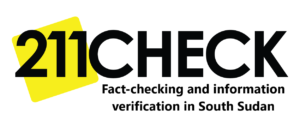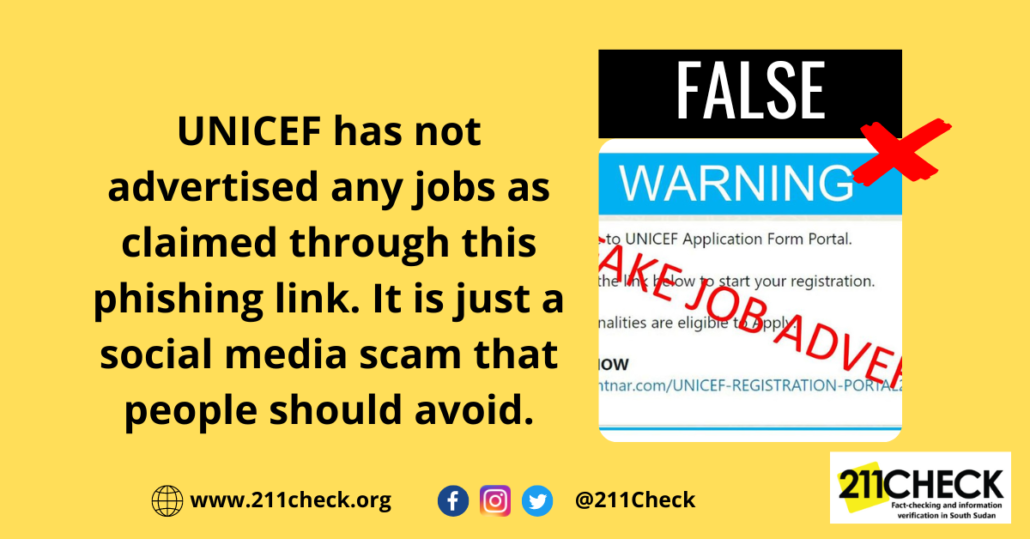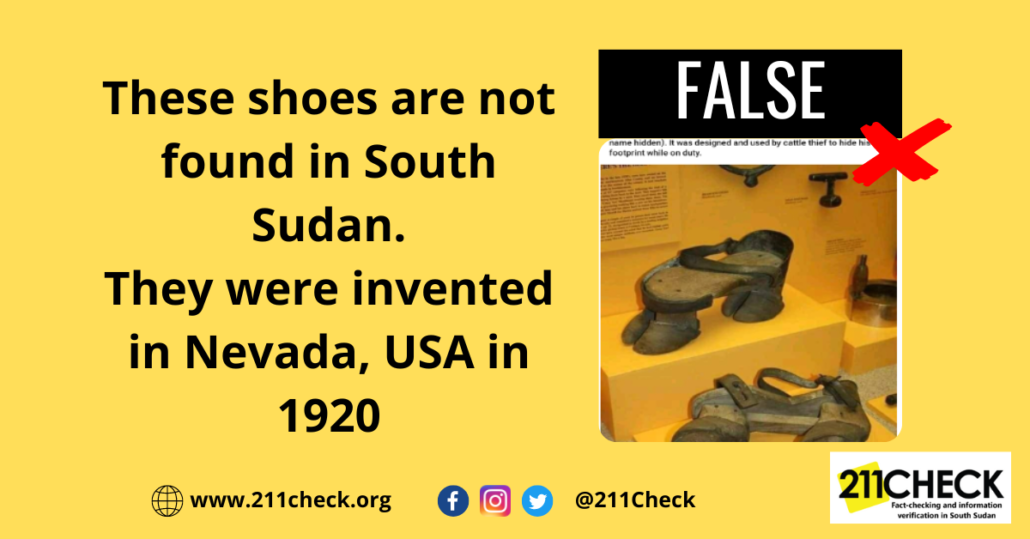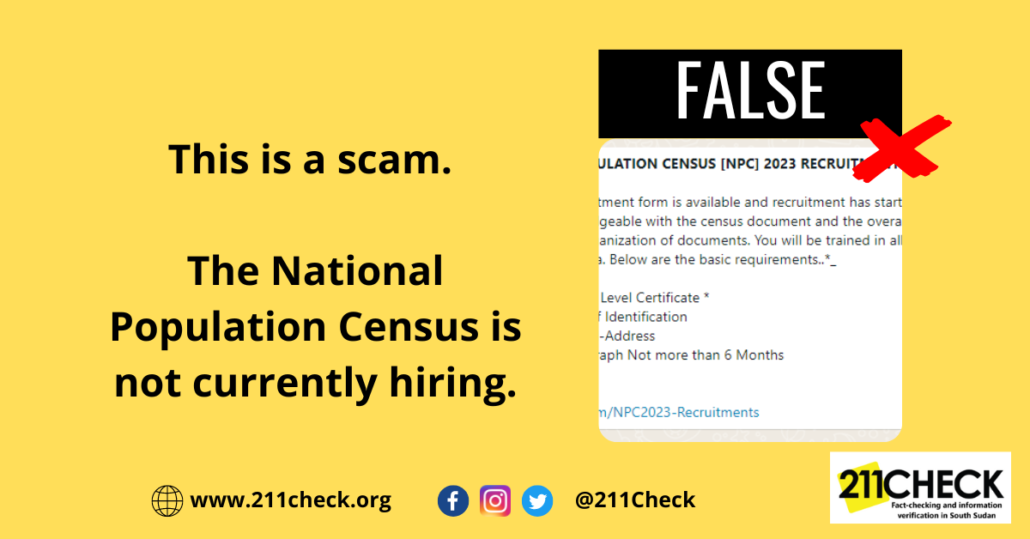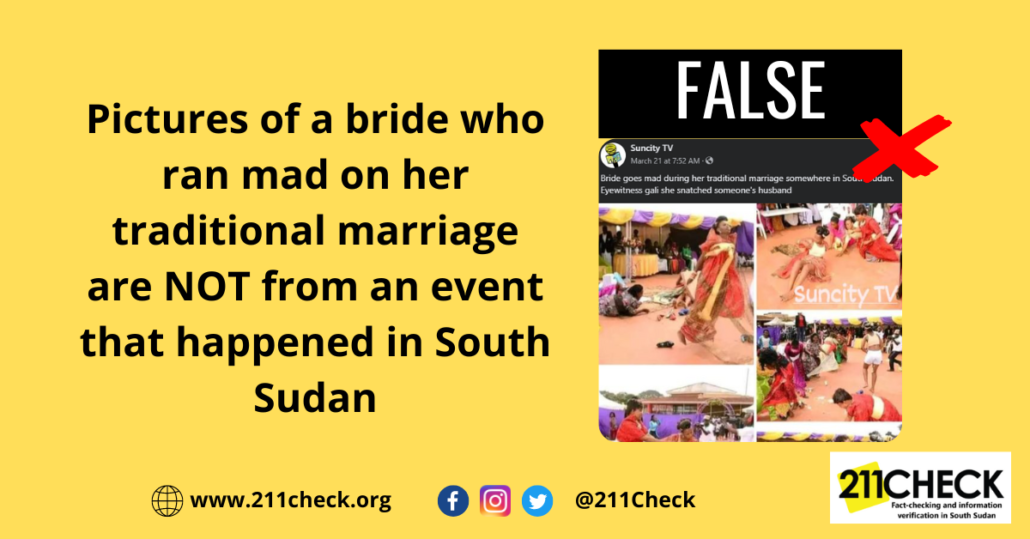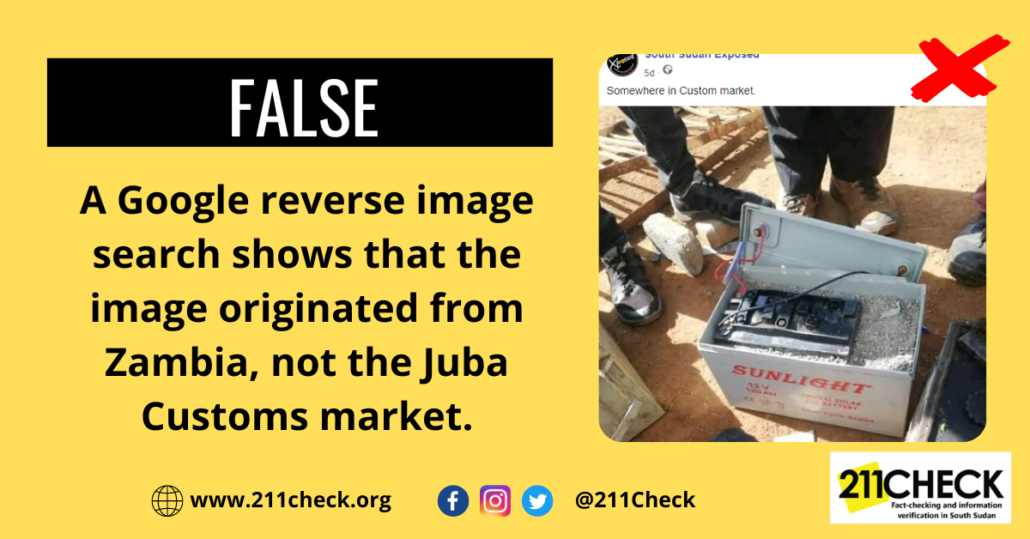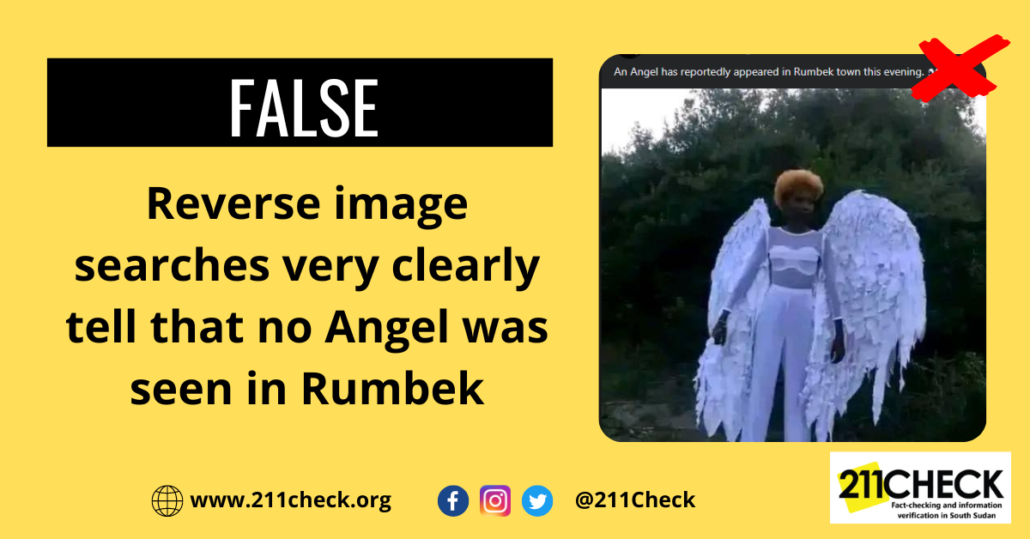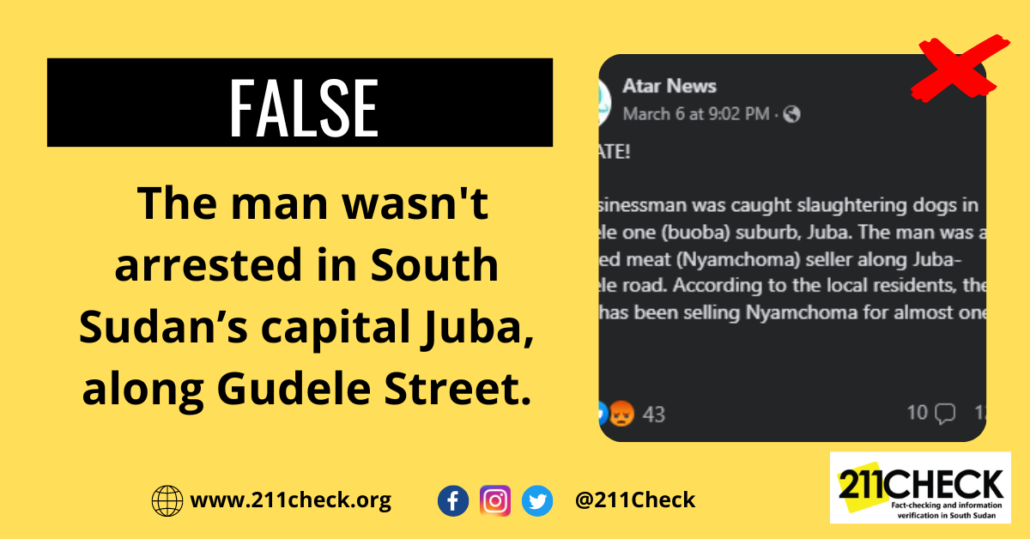Fact-check: Is UNICEF currently offering employment opportunities?
No, UNICEF has not advertised any jobs as claimed in this advert link; it is just a social media scam that people should avoid.
Writer: Jibi Moses
A job advert claiming to be from UNICEF recently went viral on social media, mainly WhatsApp groups, but it is false.
The advert’s welcoming note on the site’s homepage reads, “Welcome to UNICEF Application Form Portal. Click on the below to start your registration. All nationalities are eligible to apply.”
Investigation:
211 Check analysed the site’s address using VirusTotal, a tool used to analyse suspicious files, domains, IPs and URLs to detect malware and other breaches and automatically share them with the security community. The results show that it is phishing malware.
Secondly, UNICEF South Sudan published a disclaimer on its Facebook page, alerting the public that they have not advertised for jobs. Therefore, the public should ignore the message in circulation and consistently get open jobs from their website.
“This message going around via WhatsApp and other online platforms suggests applications to UNICEF. This is a fake job advert or calls for application. All UNICEF vacancies are announced on this official website 👉🏾 http://jobs.unicef.org. Only use this website address to view our latest vacancies and to apply for them,” UNICEF South Sudan said in a Facebook post.
“𝗨𝗡𝗜𝗖𝗘𝗙 𝗗𝗢𝗘𝗦 𝗡𝗢𝗧 receive applications (including cover letters and CVs) through WhatsApp or email. Do not open the link in the screenshot; 𝗜𝗧 𝗜𝗦 𝗙𝗔𝗞𝗘!” It added.
Lastly, when the link is opened on a protected computer with an updated antivirus, it is automatically blocked.
Conclusion:
211 Check finds that claim that UNICEF is offering jobs through a site other than its original website is false. According to the above results, this job advert is a phishing scam and not genuine. Phishing is a form of social engineering where attackers deceive people into revealing sensitive information or installing malware.
We should always be aware by updating our gadgets with powerful anti-viruses and avoiding opening suspicious links. The public should use basic cyber skills to identify such scams quickly.
Fight misinformation in mainstream and alternative media by not being a victim of fake news. Refrain from sharing content you are unsure about or don’t know where it comes from to prevent spreading false information. For more information on our fact-checking process, visit https://211check.org/ or send us a WhatsApp message at +211 917 298 255 to present a claim. Our team will fact-check it and respond promptly. #FactsMatter
